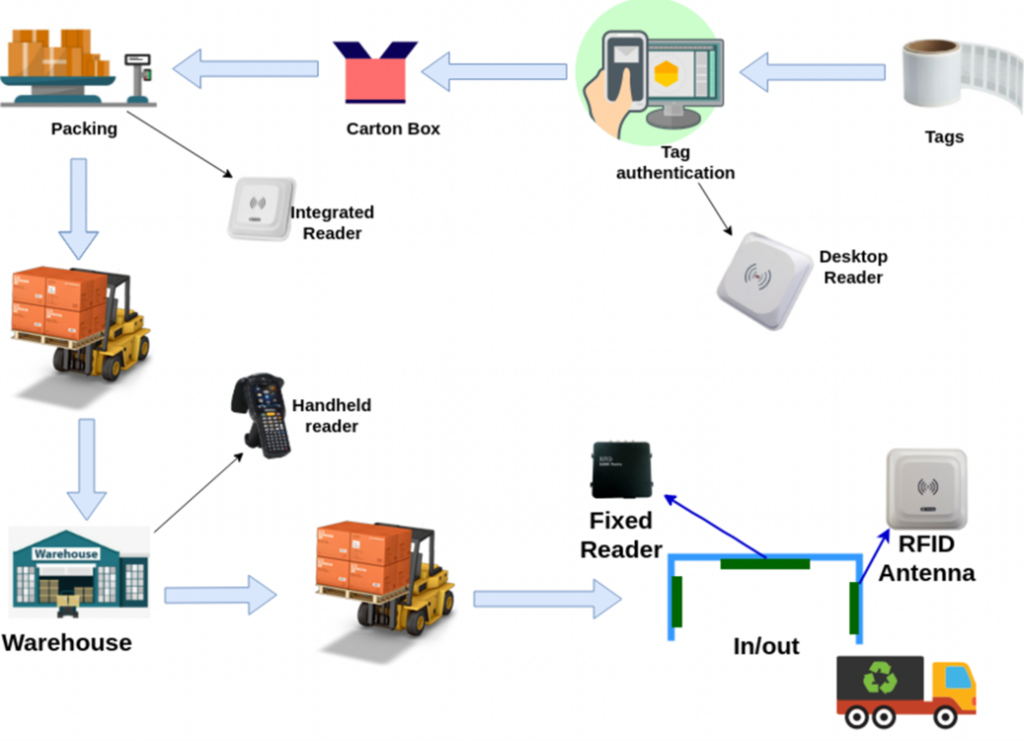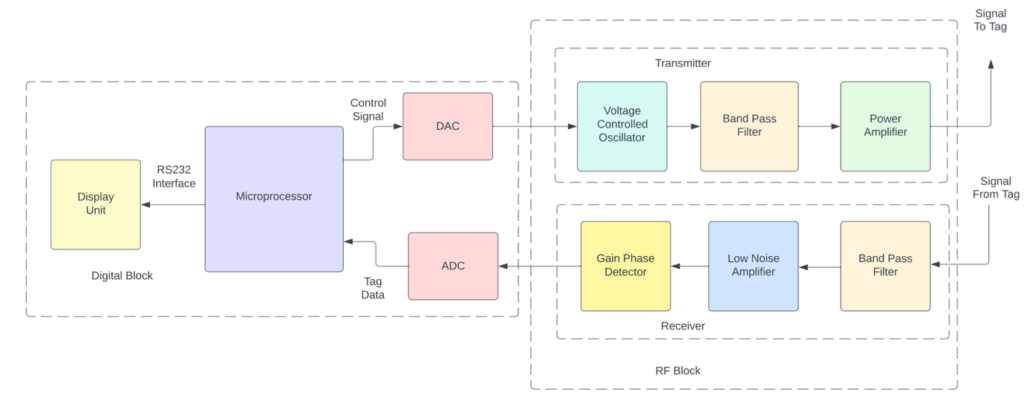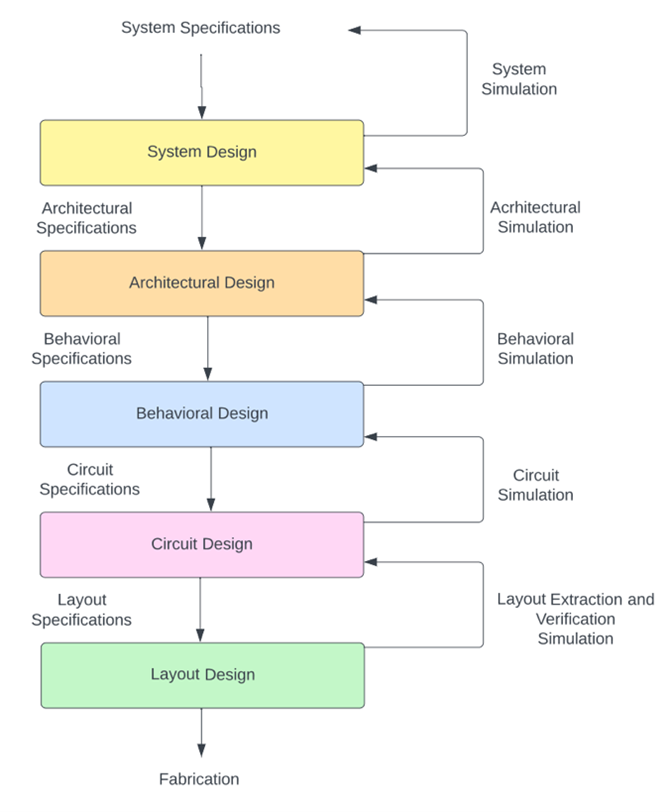Radio Frequency Integrated Circuits (RFICs) represent the driving force behind the seamless connectivity and high-speed data transmission in our modern wireless world. These compact yet powerful integrated circuits are designed to operate at radio frequencies, making them essential components in everything from smartphones and Wi-Fi routers to advanced radar systems and satellite communication. RFICs offer the promise of higher data rates, lower power consumption, and greater adaptability to evolving wireless communication standards. In this era of 5G networks, the Internet of Things (IoT), and beyond, RFICs are at the forefront of innovation, shaping the way we communicate, connect, and interact with the world around us.
In this RFIC overview, we delve into the fundamental aspects, applications, advantages, and challenges of RFIC technology, shedding light on its pivotal role in the evolution of wireless communication systems.
RFIC Applications and Markets
RFIC market is expected to grow significantly in the coming years and expected to reach $68.6B in 2030 . RFICs (Radio Frequency Integrated Circuits) find applications in a wide range of wireless communication and signal processing systems. Here are some common applications of RFICs:
Wireless Communication Devices
- Smartphones: RFICs are essential components in mobile phones, handling cellular, Wi-Fi, Bluetooth, and GPS connectivity.
- Tablets and Laptops: Similar to smartphones, these devices use RFICs for wireless connectivity.
- Wireless Routers and Access Points: RFICs enable Wi-Fi and other wireless network communication.
- Satellite Communication: RFICs are used in satellite phones and communication systems.
Wireless Standards
- Bluetooth: RFICs enable wireless connections for audio devices, keyboards, and other peripherals.
- Wi-Fi: RFICs are critical for wireless networking, including home routers and enterprise access points.
- NFC (Near Field Communication): RFICs facilitate short-range communication for payment systems and data exchange.
RFID (Radio-Frequency Identification)
RFICs are used in RFID tags and readers for tracking and identification in various industries, including logistics, retail, and access control.

Figure 1: Applications of RFID technology
Automotive Electronics
- RFICs are used in keyless entry systems, tire pressure monitoring systems (TPMS), and car infotainment systems.
- Advanced driver-assistance systems (ADAS) also rely on RFICs for radar and lidar.

Figure 2: RFIC applications in automotive electronics
Satellite Communication
RFICs are used in satellite phones, satellite TV receivers, and satellite internet modems.
Wireless Medical Devices
RFICs are found in devices like wireless patient monitors and medical implants that transmit data to external receivers.
Wireless Sensing and IoT
RFICs are used in IoT (Internet of Things) devices for wireless data transmission and control in various applications like smart homes, agriculture, and industrial automation.
Military and Defence
RFICs are crucial in radar systems, electronic warfare, and secure communication systems for defence applications.
Aerospace and Aviation
RFICs are used in communication and navigation systems in aircraft and spacecraft.
Radar Systems
RFICs are used in radar applications for target detection and tracking in various domains, including aviation, weather monitoring, and military.
Silicon Technology for RFIC Development
The choice of technology for RFIC development depends on the specific requirements of the application. SiGe (Silicon Germanium), GaAs (Gallium Arsenide), CMOS (Complementary Metal-Oxide-Semiconductor), and SOI (Silicon-On-Insulator) are all useful for RFIC development, and each has its own advantages and applications in the field of RFIC design.
- SiGe (Silicon Germanium): SiGe is often chosen for applications that require a balance of high-frequency performance in the microwave and millimetre-wave frequency ranges, and integration with digital components in the CMOS technology. Wireless communication devices prefer SiGe technology.
- GaAs (Gallium Arsenide): GaAs is preferred for high-frequency and high-power applications, such as radar and satellite communication systems because GaAs has high electron mobility.
- CMOS (Complementary Metal-Oxide-Semiconductor): CMOS technology is cost-effective and is therefore an attractive choice for integrating RF and digital components on a single chip. Also, CMOS RFICs are energy efficient, making them suitable for battery-powered wireless devices like smartphone and IoT sensors.
- SOI (Silicon-On-Insulator): SOI technology provides better isolation between transistors, thereby reducing crosstalk and interference. Low parasitic capacitance also enables high-frequency operation. It is best suited for military and defence applications.
RFIC Design
A typical block diagram of an RFIC (Radio Frequency Integrated Circuit) provides an overview of the various functional blocks and components within the RFIC. The complexity and specific blocks in an RFIC can vary significantly depending on its intended application. Some RFICs are highly integrated, while others are more specialized for particular functions or frequencies. The block diagram provides an overview of how these functional blocks are interconnected and work together to enable wireless communication or RF signal processing.

Figure 3: RFID Block Diagram with integration of RF block with digital block
Here’s a simplified explanation of the key elements you might find in such a block diagram:
- Antenna Interface: The RFIC’s interaction with the external world often starts with an antenna interface, where incoming or outgoing RF signals are connected.
- RF Front-End: This section includes components like Low-Noise Amplifiers (LNAs), mixers, and local oscillators. LNAs amplify weak incoming signals while mixers help with frequency conversion.
- Frequency Synthesizer/PLL (Phase-Locked Loop): This block generates stable, tunable frequencies required for signal processing, mixing, and modulation.
- Filters: RF filters are crucial for selecting and rejecting specific frequency components. They help in isolating the desired signals and suppressing interference.
- Modulator/Demodulator: Depending on whether the RFIC is transmitting or receiving, you’ll have either a modulator (for signal transmission) or a demodulator (for signal reception).
- Baseband Processing: This is where digital processing occurs, converting the analog RF signal into digital data or vice versa. It may include ADCs (Analog-to-Digital Converters) and DACs (Digital-to-Analog Converters).
- RF Output Power Amplifier: For RF transmitters, this block amplifies the modulated signal before it’s sent to the antenna. This is crucial for long-range transmission.
- Voltage-Controlled Oscillator (VCO): A VCO generates a tunable RF signal used for frequency synthesis and modulation.
RFIC Design Flow
RFIC design starts with defining the technical specifications and requirements of RFIC such as frequency range, data rate, power specification, etc. System architects then create a high level architecture that delineates the major blocks and defines their interconnections. Using the high level architectural, a behaviour model is created that is a low level abstraction of the design. Following this, the circuit designs are created for each block described above including amplifiers, filters, and oscillators. And finally, a physical layout is created for the integrated circuit taking into account parasitic elements and electromagnetic compatibility (EMC) considerations.

Figure 4: RFIC Design Flow
Some of the EDA tools used for RFIC design include: Cadence Virtuoso RF Solution, Ansys HFSS, Agilent Genesys and Tanner EDA tools.

Figure 5: User interface snapshot of Agilent Genesys
Advantages of RFICs
RFICs offer numerous advantages that make them indispensable components in modern wireless communication systems. Some of the advantages are:
- Miniaturization and Integration: RFICs integrate various components required for wireless communication into a single chip. These components include amplifiers, mixers, oscillators, filters and modulators/demodulators. This miniaturization and integration of components reduce the size, weight, and cost of wireless devices, making them portable and affordable.
- Enhanced Performance: RFICs offer precise control over the frequency, power, and modulation of radio signals, ensuring that data transmission is efficient and error-free. This is crucial for applications such as cellular networks, Wi-Fi, Bluetooth, and satellite communications.
- Frequency Agility: Modern wireless communication systems often operate across a wide range of frequencies to avoid interference and maximize spectrum utilization. RFICs can be designed to support frequency agility, allowing devices to switch between different frequency bands seamlessly. This flexibility is essential for the coexistence of various wireless technologies in the same environment.
- Power Efficiency: RFICs are designed to be power efficient in order to minimize power consumption while maintaining reliable performance in wireless communications systems. Many RFICs support voltage scaling, which allows the device to adjust its operating voltage depending on the required output power. Some RFICs also implement dynamic voltage and frequency scaling (DVFS) which dynamically adjusts the operating voltage and frequency based on signal strength and data rate requirements.
- Improve Signal Quality: RFICs include filters and equalizers that enhance signal quality, ensuring reliable data transmission even in challenging environments.
- Adaptation to Standards: Wireless communication standards and protocols evolve rapidly. RFICs can be configured or reprogrammed to adapt to new standards and requirements without the need for hardware changes.
Challenges with RFIC
RFICs present several challenges for the engineers and designers. Some of the challenges faced by RFIC designers and engineers are:
- Cost: Developing and manufacturing RFICs can be expensive, particularly for specialized applications or custom designs.
- Signal Interference: RFICs are susceptible to interference from nearby devices or environmental factors. As more wireless devices compete for available frequency bands, RFICs require careful shielding and filtering to handle increasing interference and congestion.
- Heat Dissipation: Operating at high frequencies generates heat, and managing thermal issues can be challenging, especially in compact devices.
- Signal Loss: At high frequencies, signal loss due to factors like transmission line losses and antenna inefficiencies becomes more significant and require compensation.
Future Trends in RFIC
There are many promising trends in the field of Radio Frequency Integrated Circuits (RFICs), some of which are described below:
- Millimeter-Wave and Terahertz Frequencies: RFICs operating in millimeter-wave (mmWave) and terahertz (THz) frequency bands are gaining significant attention. These higher frequencies offer vast amounts of bandwidth, which can be harnessed for ultra-fast wireless communication, including 5G and beyond. RFICs designed to operate in these frequency ranges will enable higher data rates and more robust communication systems, making them a top trend in RFIC development.
- Energy-Efficient IoT: The Internet of Things (IoT) continues to grow, with an increasing number of devices requiring wireless connectivity. Future RFICs for IoT applications will prioritize energy efficiency to extend battery life, reduce maintenance requirements, and support the proliferation of IoT devices in various industries, from smart homes to industrial automation.
- Integration with AI and Machine Learning: RFICs will increasingly incorporate artificial intelligence (AI) and machine learning capabilities. These integrated circuits will use AI algorithms for tasks such as spectrum sensing, adaptive modulation, interference detection and mitigation, and network optimization. This trend will enhance the efficiency and adaptability of wireless communication systems, especially in dynamic and congested environments.
These three trends reflect the direction in which RFIC technology is rapidly evolving to meet the demands of advanced wireless communication, emerging technologies, and the ever-growing need for faster, more efficient, and more reliable wireless connectivity.
These are just a few examples of the many applications of RFICs. As technology continues to advance, RFICs play an increasingly important role in enabling wireless connectivity and RF signal processing across various industries.
In conclusion, Radio Frequency Integrated Circuits (RFICs) stand at the forefront of our increasingly interconnected world. These specialized integrated circuits enable wireless communication, radar systems, satellite communication, and more. With technologies like SiGe, GaAs, CMOS, and SOI, RFIC designers have a versatile toolkit to address diverse applications. The continual advancement of EDA tools and semiconductor processes ensures that RFICs will continue to evolve, meeting the growing demand for high-performance, low-power, and cost-effective solutions. As RFICs enable the seamless exchange of information and power the wireless technologies we rely on daily, their importance in our connected lives cannot be overstated. The future of RFICs promises even greater innovation, further shaping the landscape of modern communication and technology.
![]()
![]()
![]()
![]()
![]()